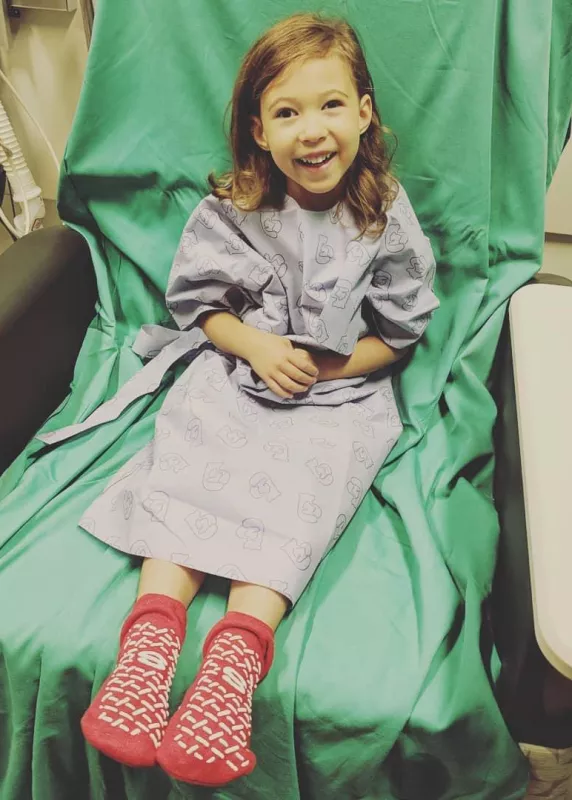Meet Kid Captain Audrey Schneller
When Audrey was six weeks old her parents noticed her eyes beginning to “flutter,” and she wasn’t visually tracking things like babies her age should be doing.

“Her eyes would go up and flutter down,” Audrey’s mother, Amanda, recalls. “I don't know if she was trying to focus on something ... but the fact that she wasn't making that visual connection with me had me concerned.”
Amanda and her husband, Will, took Audrey to her pediatrician after sending a video of the fluttering.
“She wanted first and foremost to rule out that it wasn't seizures,” Amanda remembers. “The news came back on Christmas Eve. She was seizure-free; everything was fine.”
But tears of relief were replaced by tears of fear: “If not seizures, then what are we dealing with?”
They were referred to a local pediatric neurologist who ordered an MRI.
“He wanted to make sure it wasn't a tumor in her brain causing pressure to make her eyes flutter,” Amanda recalls.
The neurologist ruled out a tumor but noticed retinal abnormalities and low fluid in her left eye, and referred the family to UI Pediatric Ophthalmology.
After examining her, the doctor speculated Audrey would likely be legally blind and referred them to a pediatric genetic ophthalmologist at UI Stead Family Children's Hospital.
“That's when we discovered that her retina was severely underdeveloped,” Amanda recalls, citing a diagnosis of persistent fetal vasculature, a congenital disorder that may lead to vision impairment. “Again, we were told that Audrey would likely be legally blind, and we got a new secondary diagnosis: microcephaly.”
Microcephaly involves a smaller than normal head, which can correlate to abnormal brain development and intellectual disabilities.
They were referred to a pediatric geneticist to determine the cause.
“We went home and life once again went back to normal, except something magical started happening,” Amanda recalls. “Audrey’s vision seemed to improve (almost) daily.”
“We caught her on video tracking for the first time,” she adds. “My husband had her pacifier on a stuffed animal, and he was bouncing it across the table and it was our first time watching her track it. She was just laughing so hard. I love that we caught it on tape, because you can also see my husband behind; he has this look of shock.”

At her next appointment, the doctor gave the couple good news: the retina in her “good eye” had flattened, so she would have better vision than anticipated.
“At the end of it, (the doctor) gave both of us a great big hug,” Amanda says. “She was thrilled. We were all thrilled.”
Audrey was fitted with glasses, had laser surgery and wore an eye patch as part of her medical intervention.
The results of genetic testing showed Audrey’s retinal issues and microcephaly were linked to a gene known as KIF11. The condition occurs when one of a person’s two copies of the KIF11 gene does not function normally.
“When Audrey was diagnosed, there were only 87 documented cases in the world,” Amanda says. “Hers was the 13th novel, meaning it's the only one like that. I can’t believe her incredible team was able to discover something so obscure and provide us with answers we so desperately needed.”
Now 7, the Waukee girl is in second grade and enjoys dance, singing and art.
“I can't thank them enough for everything they've done,” Amanda says. “They're truly experts in what they do and they care. It's incredible to have the amount of knowledge they have under one roof.”

Patient Stories

